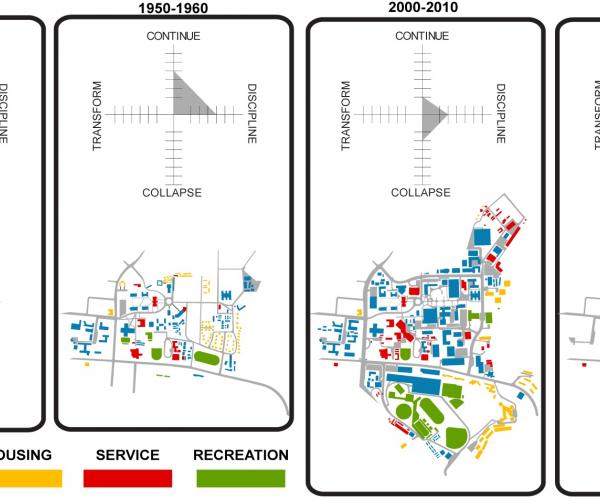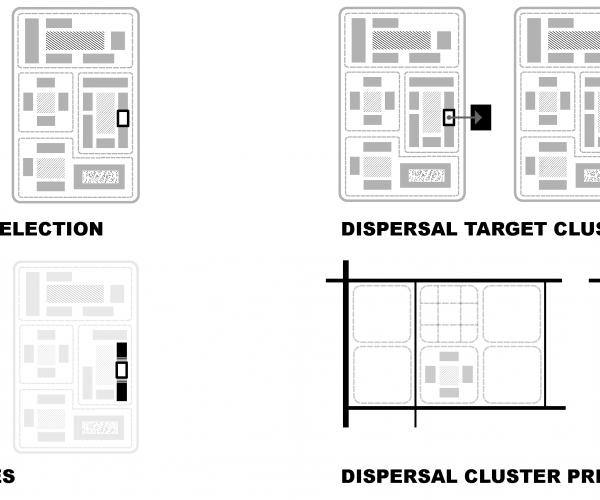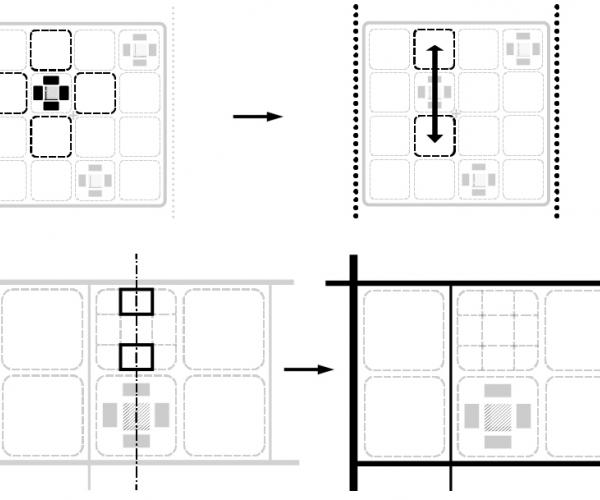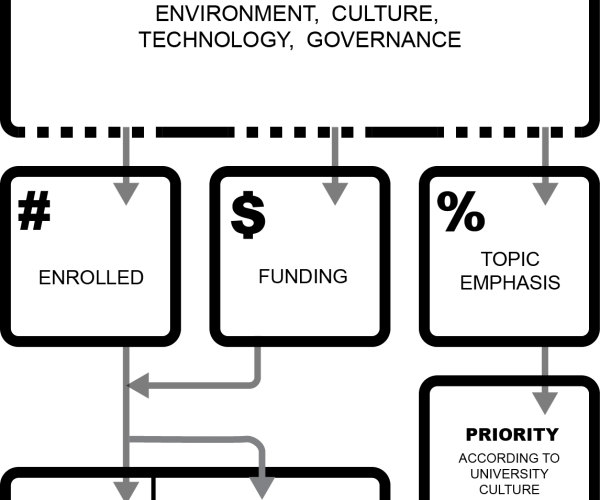A Future Scenarios Based Computational Framework for Campus Planning
Future forecasting methodologies and computational applications are applied for developing an interactive design framework in the campus planning process. The proposed computational design frame-work programs various design rules intended for producing buildings with optimized capabilities to adapt to their future settings and meet the functional requirements based on future scenarios. The implementation of the computational framework for the future scenarios based campus planning is introduced.
DETAILS
- Hyoung-June Park & Ray Yeh
- Completed
- Design Future(s) Lab
- University of Hawaii at Manoa
DISSEMINATION
DESCRIPTION
The future scenarios are described mainly for the purpose of demonstrating the formal development of campus and are not necessarily an accurate representation of the result of the driving forces. Forecasted futures are different from actual present results. The comparison between them is a critical factor for establishing the next scenario. This judgment is made by the stakeholders of campus development, which may be open to interpretation. In return, it encourages more stakeholder participation and input for defining the parameters and constraints of future campus development. The scope of our proposed framework is still limited by the set of available patterns or design rules which have been extracted from the case studies of 12 universities in the US. The design of the proposed framework considers the scalability of patterns or design rules as observed in other case studies. Its scalability is based on the extensive usage of the driving forces in other cases. The enhancement of the framework is being made on its front end with improving and updating its image library to more compatible abstract programming in-terface (API) with HTML5, SVG, or WebGL.
Our understanding of where we live
is not so philosophical but rather pragmatic
Understanding urban environment with quantifiable measures has been the source of debates
Well then becomes the one of heated discussions … now possiblly the one of main trends






